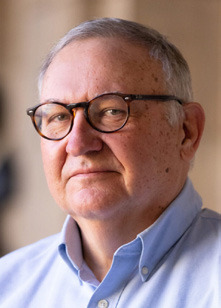As a young reporter, I got the opportunity to cover, and learn a few things, from maybe the greatest state senator ever, Jerome Warner.
He was the kind of state senator who just commanded respect, and unlike some politicians, had a well-formed group of beliefs that guided his decision making.
For instance, one was that user fees should finance certain aspects of government.
For example, roads. The primary users of roads and highways should pay for them, Warner reasoned. Thus, he believed that gas taxes, paid by users of roads, ought to fund road-building (but that concept was abandoned by legislators a few years back when they designated a portion of the state sales taxes to that endeavor).
He also wasn’t a big fan of merging wings of government.
I’ll never forget a plaque on the wall of Warner’s office. It displayed a quote attributed to a Roman philosopher that read: “We trained hard, but it seemed that every time we were beginning to form up into teams, we would be reorganized.”
The punchline that followed was that reorganizing was a wonderful way to present the “illusion of progress” while instead, producing “confusion, inefficiency and demoralization.”
Which brings us to Gov. Pillen’s most recent proposal – to merge the Nebraska Department of Natural Resources (DNR) with the Nebraska Department of Environment and Energy (NDEE).
Doing this, the governor recently told state legislators, would eliminate redundant administrative functions, and would – after spending $100,000 to “rebrand” the new unified agency and print new business cards and stationery – save money and better address nitrate contamination in groundwater.
Who isn’t for saving a few bucks and protecting our drinking water from nitrate contamination?
And, if the old ways of doing things aren’t working anymore, changing things around can make improvements.
But the governor and his people, according to press accounts, didn’t come armed with a lot of reasons why merging these two government agencies – which spend a combined $200 million a year – would save money and be more efficient.
Management of the state’s water resources, which DNR handles, is complicated and often controversial. It requires balancing competing interests of those who use groundwater for irrigation and manufacturing with those who utilize stream flows for crops and wildlife.
That seems like quite a different job than advising companies and feedlot operators how to avoid running afoul of laws protecting our air, land and water.
These mergers can get heated, like two years ago when the Central Nebraska Public Power and Irrigation System and Dawson Public Power proposed a corporate marriage. Irrigators who rely on groundwater recharge from Central’s irrigation ditches howled in protest, because they would have lost clout under a merger – a merger ultimately abandoned.
Similar concerns were raised about joining DNR and NDEE by those interested in building the Perkins County Canal. The long-ago-abandoned canal would, in concept, divert more water from the South Platte River for Nebraska before Denver area suburbs do. A merged agency, they argued, might not be as aggressive in supporting such a multi-million-dollar project.
The merger was not supported by the state’s biggest agriculture organization, the Nebraska Farm Bureau, who helped Pillen get elected in 2022. That’s always a red flag when they disagree.
For Pillen, the roughing up he got at the public hearing over his merger idea couldn’t have been as rough as being bucked off a horse, as happened in December.
But like that horse, he might want to keep this idea in the barn for a while.
Paul Hammel has covered state government and the state for decades. He retired in April as senior contributor with the Nebraska Examiner. He was previously with the Omaha World-Herald, Lincoln Journal Star and Omaha Sun.

.jpg)











